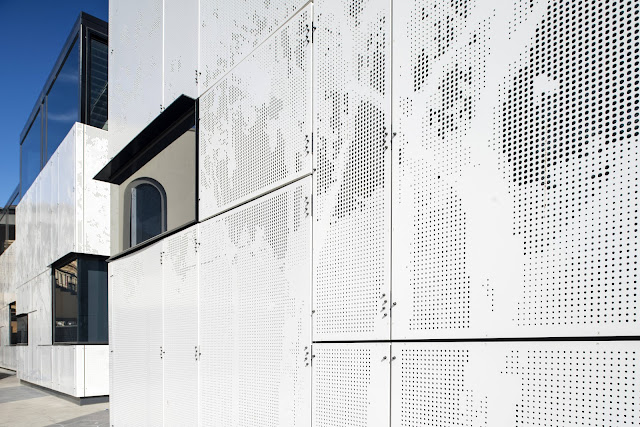The Style Evolution of Jaalis – VMZinc
Jaalis are perforated lattices or screens that have decorative patterns. Jaalis designs are common in Hindu and Islamic architectures. The original purpose of jaalis was to filter the light and allow the essential natural light into the building. Initially, jaalis were curved on sheets of stones and concrete, but due to modern technology, the purpose and materials of jaalis have changed.
Nowadays, the jaalis designs have taken a diverse function and market. There are perforated metal screens and vmzinc screens. They help to decorate and ventilate the room. Jaalis are also being used in façade cladding and room partitioning. Jaalis enhance the beauty of the house due to their ornamental patterns.
Origin and evolution of jaalis
Jaalis originated from Islamic culture, which filters the light and allows natural light into the room. The culture has a special regard for light. They also have a root origin from the Arabian desert, which was necessary to distort the hot sunlight. The style later spread to India, where it was widely spread due to the Mughal architecture. The materials used were stones and wood.
In the modern days, the jaalis designs have spread out of Islamic culture and India and have taken a diverse role in architectural designs. The perforated screen is now being used in façade designs and interior designs of the house. The zinc metal screens are now widely used due to their admirable qualities and features.
The vmzinc jaalis
Over the years, jaalis were made using woods and other plant-based materials. With the emergence of VMZinc metal alloy, people can't resist its aesthetic beauty. Perforated zinc has become popular in buildings. In addition to zinc being opaque, it can also reflect light energy. Screens made from zinc are more versatile because they offer beauty and thermal regulation.
Perforated zinc cladding is more attractive due to the elegant look during the day and faded display during the night. Using these types of screens on window curtains helps to protect the people inside from solar energy. It helps interior comfort by enabling natural light to flood into living rooms while still protecting people's privacy.
Aside from that, perforated zinc self-generation capabilities, as a result of which develops a natural texture over time. It also possesses corrosion-resistant abilities, and it is because of these essential characteristics of zinc that it is an excellent material for perforated cladding systems. Making advantage of it will provide the project with all the beauty and longevity it requires.
Conclusions
Jaalis have evolved exponentially over the years. Their popularity and demand have increased due to their versatile purposes. Jaalis serve a significant role in the light and heat regulation of the house. However, most people use them in their houses due to the beauty enhancement. Zinc metal screens have overtaken the jaali industries due to their immeasurable qualities. You can find perforated zinc screens at any jaalis design.




Comments
Post a Comment